Competition pools are often the heart and center of Olympic venues, sports clubs, and fitness centers. Built as advanced aquatic environments, they are built to support all kinds of sport-related activities: from high-performance training, to professional competitions, and recreational swimming activities.
Today, modern competition pools showcase state-of-the-art aquatic engineering. As such, they incorporate precise construction systems and advanced water treatment solutions that, among other solutions, ensure the pools cater to a wide variety of sport disciplines and comply with all relevant standards.
In this guide, we take a deep dive into the reality of competition pools today, exploring:
- The distinction between competition pools and training pools
- The main types of sport and competition pools
- Optimal construction methods for long-term performance
- Efficient water treatment technologies
- Essential equipment and accessories for operation and compliance
Sumérgete más con nuestro Ebook
What is a competition pool?
A competition pool is an aquatic facility that has been designed to comply with rigorous standards in order to host official swimming events as well as serving as high-performance training centers for elite athletes.
This definition applies to competition-grade pools, that is, pools built for official events that must therefore meet strict international standards. In these pools, everything –from the depth and temperature to lighting and lane equipment– must align with World Aquatics (formerly FINA) guidelines.
As such, these competition pools are engineered with advanced building materials and technologies to ensure peak performance, safety, and regulation compliance. Venues like Club Natació Sabadell and CAR Sant Cugat in Spain serve as examples of such facilities.
Competition pools vs. pools for sports clubs and general use: what’s the difference
Swimming pools found in sports clubs and gyms often cater to daily workouts, swimming lessons, and recreational use. The main difference between these pools and competition pools is that they don’t have to comply with international federation standards.
As such, these pools are subject to other requirements, including national and local regulations. Whether used for fitness, rehabilitation, or swimming instruction, they must provide safety, durability, and comfort for all users, which are ensured thanks to precise construction and effective water systems.
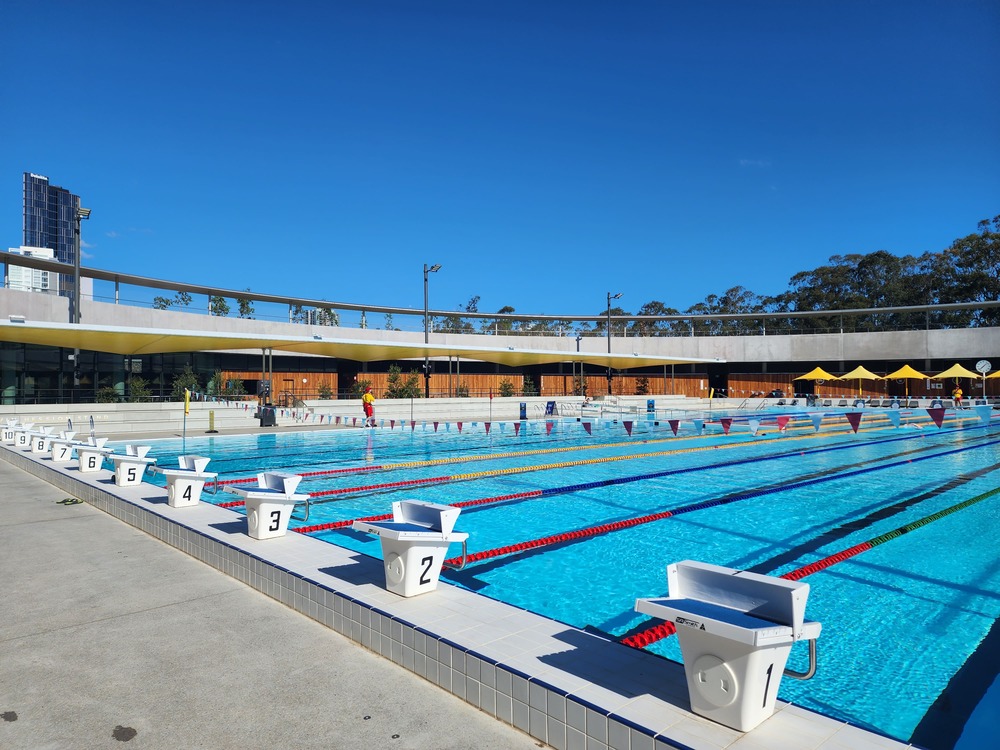
Types of competition pools
Not all competition pools are the same, as each sport category requires a uniquely designed aquatic space. As an example, a look at common pool depth requirements showcases the diverse standards pool operators and constructors must be ready to comply with.
While detailed information about the official competition pool rules can be consulted at the World Aquatics Competition Regulations, below we compile the most common categories of training and competition pools and their most important required standards:
Olympic pools
Measuring 50 meters in length, Olympic pools are the premier format for international swimming events. With 10 lanes (of which 8 are typically used in races), these pools must maintain uniform depth and comply with exact lane markings, gutter systems, and starting block configurations as outlined by World Aquatics.
Semi-Olympic pools
These are 25-meter swimming pools, common in clubs and both national and international competitions. While not used in the Olympics, they follow similar construction standards than Olympic pools and are ideal for training and events.
Diving pools
Designed to accommodate springboard and platform diving, these pools feature specialized depths —usually exceeding 5 meters— and structural reinforcement to absorb impact. Large sports facilities with professional diving programs often incorporate these pools as part of their offering.
High-diving pools
This extreme discipline requires dives from highly elevated platforms: 20 meters for women and 27 meters for men, according to World Aquatics. As such, high-diving pools are built attending to unique spatial and safety requirements, including special aeration systems (spargers) to cushion landings.
Water polo pools
The specific measurement requirements for these competition pools require them to be deep enough to prevent players from touching the floor. Additionally, water polo pools must measure at least 30 x 20 meters for men and 25 x 20 meters for women. Water polo pools often share space with Olympic swimming pools, using floating boundaries and goals to delimit the field of play.
Artistic swimming pools
In order to accommodate the intricate routines of artistic swimming, these competition pools must be at least 30 x 20 meters, and 3 meters deep. Other additional requirements for these pools are ensuring calm water surfaces and the option to include underwater cameras and speaker systems.
Warm-up pools
Found alongside main competition pools, warm-up pools are designed to allow athletes to stretch, warm up, or cool down before or after competitions. They often replicate the competition pool’s layout and accessories for consistency.
Lap pools
Although they are not competition pools, lap pools serve daily swimmers, fitness enthusiasts, and facilities offering swimming lessons. Often rectangular and compact, they are not subject to World Aquatics standards, they must adhere to local building and hygiene regulations.
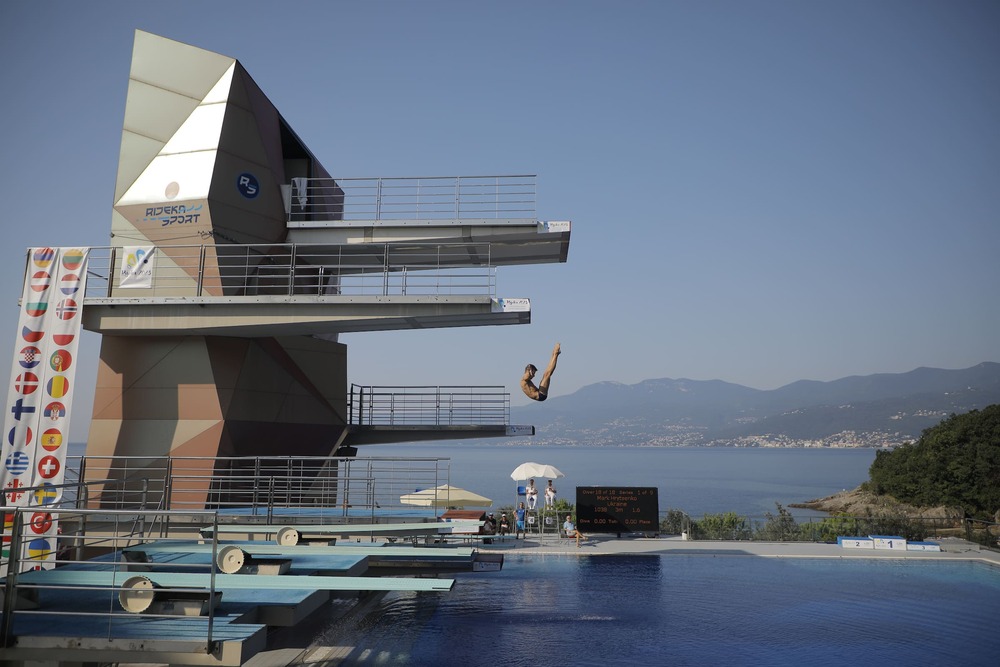
Leading construction systems for competition pools
Building competition pools requires engineering precision and adaptable systems that can be installed quickly and cost-efficiently while also meeting strict international standards.
The choice, in many ways, must be based on each project’s needs and goals, including the question of whether the pool will be used for a single temporary event or remain permanently installed at the aquatic centre.
Concrete pools have long been the go-to choice for permanent installations. Today, however, there are other innovative systems available that meet both needs with efficiency and precision.
The following top-tier modern construction methods offer outstanding benefits and flexibility in making that choice:
Skypool
Skypool by Fluidra is a modular construction system based on the use of carbon steel panels coated with a zinc-aluminum-magnesium alloy. This approach ensures excellent resistance to corrosion and environmental stress, all while remaining lightweight and easy to install and dismantle.
Skypool panels also feature a seamless anchoring system, ensuring 100% watertight performance and perfect accuracy, making them ideal for venues hosting international competitions.
The following are the key benefits of this construction system for competition pools:
- Fully compliant with World Aquatics specifications
- Ideal for both permanent and temporary pools
- A modular approach to design that enables portability and reusability
- Allows for a quick installation, reducing downtime and cost
Bluespring
Bluespring is based on prefabricated dual-wall panels with built-in overflow channels and compensation tanks. As such, it offers an adaptable design that fits well into smaller environments, such as hotel rooftops or compact sports clubs.
Among the key highlights of Bluespring are:
- It is lightweight and space-efficient
- Built on a double-walled perimeter structure
- Offers stylish finish options
- It is suitable for smaller-scale athletic centers
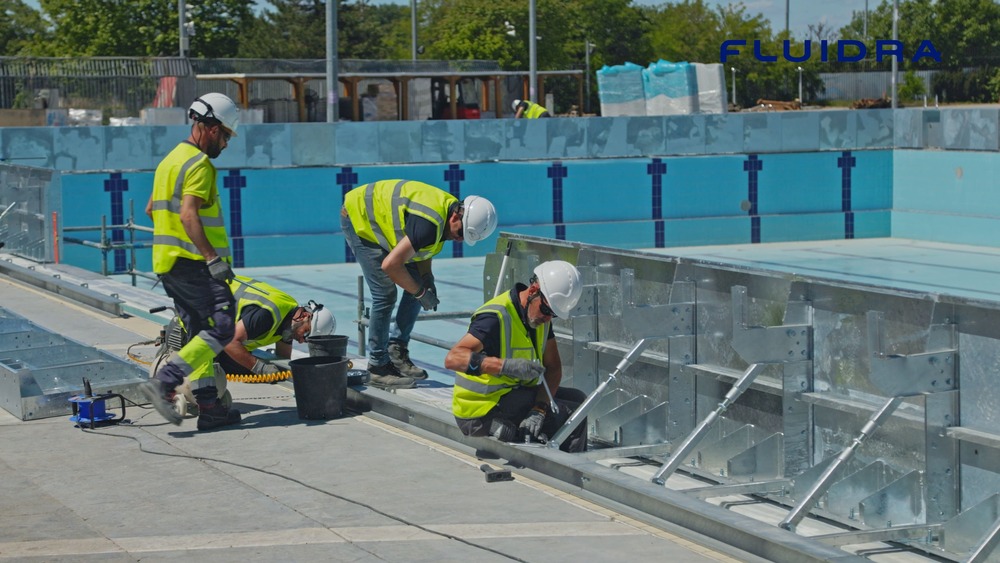
Advanced systems and equipment for competition pools
Water treatment for competition pools
Clean, safe, and clear water is crucial for both performance and health reasons in competition pools. But that’s not all: regulatory federations like World Aquatics enforce strict water quality standards in terms of salinity levels, disinfection and turbidity for official competitions.
As water treatment represents a key issue for competition pools, the following offer two key examples of water treatment systems for competition pool facilities:
Neolysis: a combination of electrolysis and UV treatment
The Neolysis system integrates UV and saltwater electrolysis to eliminate pathogens while minimizing chemical use. By correcting pH with CO₂ injection instead of acid, it also reduces eye irritation, skin dryness, and chlorine odors.
As such, the added benefits of the Neolysis approach include:
- Minimizes harmful by-products like chloramines
- Enhances swimmer comfort and safety
- Eco-friendly operation with reduced emissions
- Requires less chemical handling
Nefrona: a compact plug-and-play system
A perfect fit for temporary or mobile competition pools, the Nefrona system offers a monobloc compact solution combining filtration, disinfection, and water circulation in one mobile unit.
This system’s key advantages include:
- Easy transport and setup
- Hot-dip galvanized steel base that resists corrosion
- Optional heating and microfiltration units
- Offers convenience for short-term events and pop-up venues
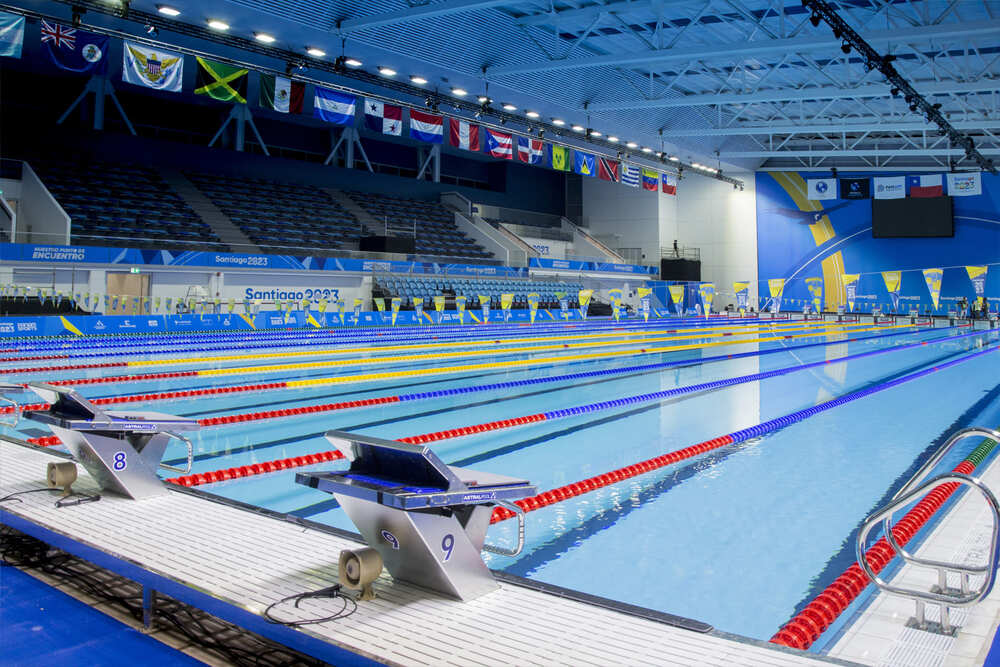
Key elements and accessories for competition pools
To prepare a pool for competition, several accessories and structural components are necessary:
1. Lining and decking
The following good practices in lining and decking ensure competition pools are ready to meet regulations and guarantee top performance:
- Reinforced PVC liners provide waterproofing, durability, and UV resistance.
- Porcelain stoneware tiles add aesthetic value and performance longevity.
- Anti-slip pool decks ensure safe walking areas around the pool.
2. Competition equipment
While essential gear varies depending on each discipline’s needs, the following are some elements that may be added in competition pools’ design:
- Starting blocks and timing systems
- Lane dividers, floats, and backstroke flags
- False start ropes and turn indicators
- Diving springboards, platforms and spargers for safe landings
- Water polo goals and ball cages
3. Adjustable features
To maximize the pool’s utility, some facilities incorporate movable bulkheads to split pool lanes and/or adjustable floors, which offer varying depths that can be adjusted depending on the intended activity in the pool.
4. Lightning for competition pools
Good visibility being key for both athletes and officials. Light design in competition pools must take into account the World Aquatics lighting levels requirements, which vary for each discipline. For example, swimming competitions require a minimum of 600 lux at 1 metre above the water.
In this context, modern lighting solutions use LED technology to provide energy-efficient illumination and meet updated EU eco-design standards (which prohibit halogen lamps).
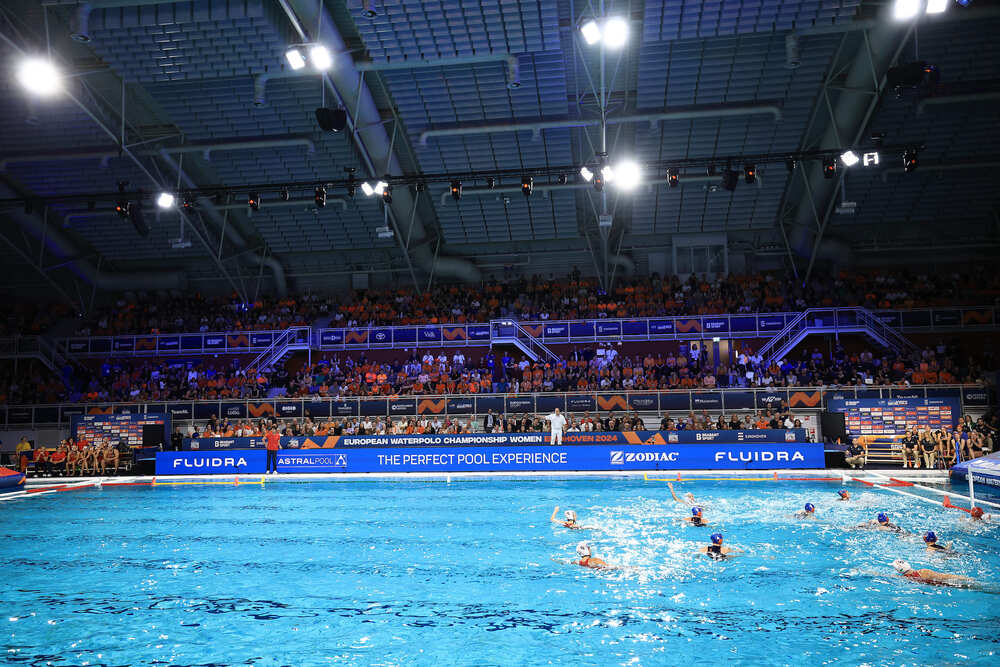
Frequently Asked Questions about competition pools
How far is a competition pool?
The length of competition pools depends on what specific competition they host and, as such, which World Aquatics requirements it must follow. However, two common lengths for competition pools are 50 meters (for Olympic pools) and 25 meters (for Semi-Olympic pools).
What is a competition pool called?
As seen above in this article, competition pools can be called different names depending on the actual competition they are designed to host. As such, some of the essential competition pool names include:
- Olympic pool, for 50-meter-long pools
- Semi-Olympic pool, for pools that are 25 meter long
- Diving and high-diving pools
- Water polo pools
- Artistic swimming pools
Modern aquatic engineering meets competition standards for state-of-the-art competition pools
As seen above, developing top-quality competition pools requires strategic planning that incorporates international standards and integrates smart construction and water treatment technologies.
Whether building a global event venue or upgrading a sports club facility, choosing the right systems and implementing advanced treatment is key to ensure lasting success.
Ultimately, modern aquatic engineering offers facility managers and developers the possibility to create outstanding aquatic environments that not only meet professional regulations but also deliver superior experiences for athletes, staff, and spectators alike. All while ensuring competition pools remain a cost-efficient facility both during construction and in maintenance operations.
